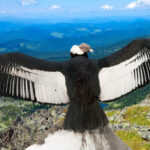As the days shorten and temperatures drop, you might be wondering when you can finally expect a break from pesky wasps. It’s a common question for homeowners and anyone who spends time outdoors: What Temperature Do Wasps Stop Flying? The answer isn’t always black and white, and understanding the nuances of wasp behavior in cooler weather can help you stay safe and manage these insects effectively.
This guide will delve into the temperature ranges that influence wasp activity, explore how different species react to cold, and offer practical tips for dealing with wasps as the seasons change.
Understanding Wasp Behavior: More Than Just Temperature
To truly understand when wasps cease their buzzing, it’s important to first grasp some basics about their behavior. Wasps are social insects, living in colonies with complex structures, typically building nests in sheltered locations such as under eaves, in wall cavities, or within trees. Known for their painful stings, wasps can become quite aggressive, especially when they feel their nest is threatened.
Wasp activity peaks during spring and summer. Warmer temperatures provide the energy they need to forage, build nests, and raise their young. During these active months, wasps are industrious, feeding on nectar, pollen, and other insects, playing a role in the ecosystem, though often seen as pests by humans. As autumn approaches and temperatures decline, their activity naturally changes.
Decoding the Temperature Threshold for Wasp Flight
So, back to the crucial question: at what temperature do wasps stop flying? Generally, wasp activity significantly decreases when temperatures fall below 50°F (10°C). At this temperature, wasps become sluggish and less mobile. Their flight muscles, like those of many insects, are highly dependent on ambient temperature to function optimally. Cold temperatures hinder their ability to generate the energy required for flight.
However, it’s not a simple on/off switch. Several factors influence this temperature threshold:
- Species Variation: Different wasp species exhibit slightly different tolerances to cold. For instance, yellow jackets and paper wasps, two common types, might remain active at slightly lower temperatures compared to other species. Some species can even be observed flying on surprisingly cool days if there is sunshine warming them up.
- Sunlight and Shelter: Even on days below 50°F (10°C), wasps might become temporarily active if they are in direct sunlight or find a sheltered, warmer microclimate. The warmth of the sun can provide a temporary energy boost, allowing them to fly for short periods.
- Nest Location: Nests situated in locations that retain heat, like south-facing walls or attics, might allow wasps to remain active for longer into the colder months. These nests can provide a buffer against the external cold, keeping the colony slightly warmer.
Alt text: Wasp nest attached to the underside of a house eave, showing typical sheltered nesting spot.
It’s crucial to remember that even if you don’t see wasps flying, they aren’t necessarily gone completely. Below 50°F (10°C), while flight becomes difficult, wasps can still be present and potentially dangerous, especially if disturbed.
Cold Weather Wasp Behavior: Sluggish but Still Sting-Prone
As temperatures continue to drop, wasp activity diminishes further. When temperatures approach freezing (32°F or 0°C) and below, most wasps become immobile and enter a state of torpor, a form of dormancy similar to hibernation but less deep. They are unable to fly and their metabolism slows drastically.
However, cold weather can actually make wasps more aggressive if they are disturbed. Their food sources become scarce in the cold, and they become more protective of their nests and any remaining food stores. If you accidentally disturb a nest in colder weather, even if the wasps seem slow, they can still sting in defense.
Staying Safe from Wasps in Cooler Months
While wasp activity decreases with the cold, caution is still advised. Here are some tips for staying safe as temperatures drop:
- Nest Awareness: Be mindful of potential nest locations around your property, even in the fall and early winter. Avoid disturbing areas where nests might be present, such as sheds, garages, and under eaves.
- Professional Nest Removal: If you need to remove a wasp nest, even in cooler weather, it’s safest to consult with a professional pest control service. They have the expertise and equipment to remove nests safely, minimizing the risk of stings.
- Evening is Best (If DIY): If you choose to tackle a non-aggressive wasp nest yourself (and are comfortable doing so), the late evening or early morning when temperatures are at their lowest and wasps are least active is the safest time.
- Protective Gear: If you are dealing with wasps or potential nests, always wear protective clothing, including long sleeves, pants, gloves, and eye protection. For aggressive species or larger nests, consider more robust protection like a beekeeping suit, as mentioned in the original article, for enhanced safety.
Alt text: Individual in full beekeeping suit spraying wasp nest demonstrating protective wasp removal gear.
- Remove Food Sources: Continue to keep outdoor areas clean of food debris, especially sugary substances and uncovered garbage. While wasps are less active in the cold, removing attractants can still discourage any lingering activity.
Conclusion: Cold Weather Means Less Wasp Activity, Not No Wasp Activity
In summary, while wasps generally stop flying when temperatures consistently fall below 50°F (10°C), it’s not a guarantee of complete absence or inactivity. Factors like species, sunlight, shelter, and nest location play a role. Even in colder weather, wasps can still be present, and potentially aggressive if provoked.
Understanding this temperature-activity relationship, and taking appropriate safety precautions, allows you to navigate the transition seasons with greater awareness and enjoy your outdoor spaces with more peace of mind, even as the temperature drops and the wasps slow down.
